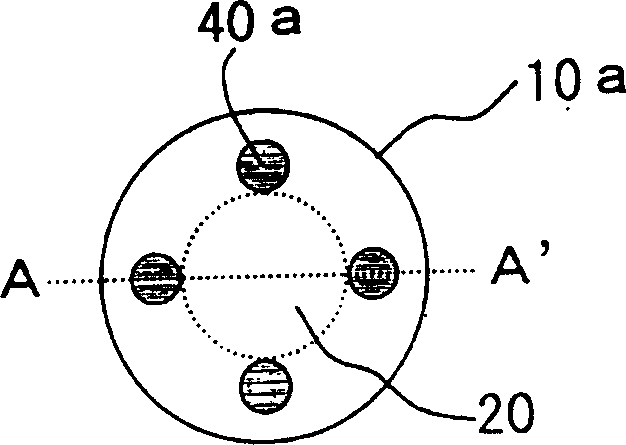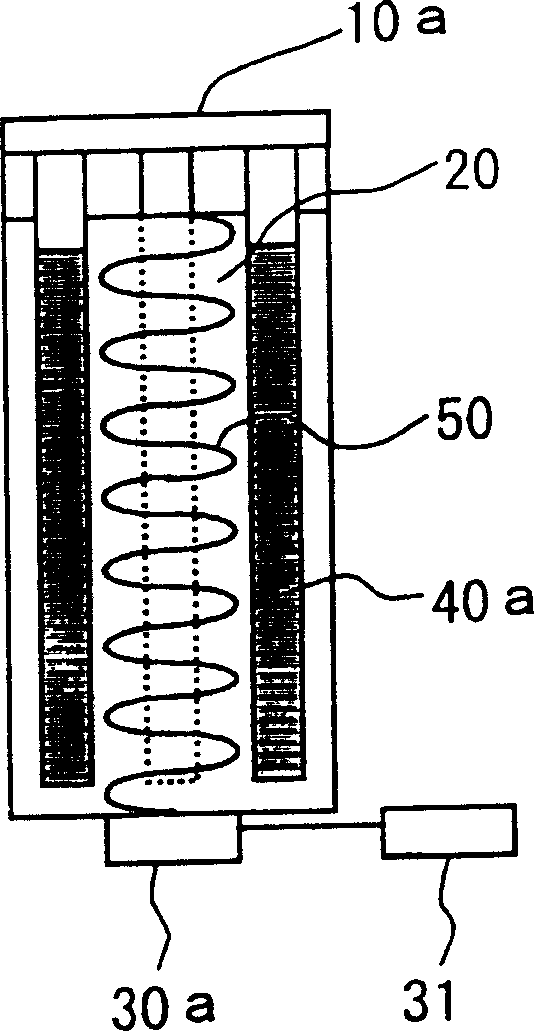Method and device for decomposing environmental pollutants
A material and substantive technology, applied in the direction of water pollutants, polluted groundwater/leachate treatment, washing equipment, etc., can solve the problems of insufficient oxidation capacity and inability to decompose, and achieve treatment efficiency improvement, attenuation suppression, and high-efficiency irradiation The effect of decomposition
- Summary
- Abstract
- Description
- Claims
- Application Information
AI Technical Summary
Problems solved by technology
Method used
Image
Examples
Embodiment 1
[0153] Using the decomposition device shown in Figure 1, 3 L of high-concentration aqueous solution of tetrachlorethylene 150 mg / L, one of the volatile organic chlorides to be treated, is simultaneously used with 380 kHz, 200 W ultrasonic waves and ultraviolet rays with a maximum intensity near 260 nm. Irradiation was performed and the residual perchlorethylene concentration was determined over time. The result is as Figure 21 shown.
Embodiment 2
[0162] Using the decomposition device in Fig. 1, 20ml of the 1mg nitrogen / L (1mg N / L) solution of ammonium sulfate aqueous solution, one of the nitrogen-containing compounds of the treated solution, has the maximum intensity near 260nm with 200kHz, 200W ultrasonic waves and wavelength Simultaneously irradiated with ultraviolet rays, and measured the change of the decomposition product nitrate ion generation rate with time. The result is as Figure 22 shown.
Embodiment 3
[0169] use Figure 15 The decomposing device, as one of the volatile organic chlorides of the treated solution, 3L of high-concentration aqueous solution of tetrachlorethylene 150mg / L, adjusted the pH value of the treated solution to 5 with phosphoric acid buffer solution in advance, and then used 380kHz , Ultrasonic waves of 200W and ultraviolet rays with the maximum intensity near 260nm are irradiated at the same time, and the concentration of residual tetrachlorethylene is measured over time. The result is as Figure 23 shown.
PUM
 Login to View More
Login to View More Abstract
Description
Claims
Application Information
 Login to View More
Login to View More - R&D
- Intellectual Property
- Life Sciences
- Materials
- Tech Scout
- Unparalleled Data Quality
- Higher Quality Content
- 60% Fewer Hallucinations
Browse by: Latest US Patents, China's latest patents, Technical Efficacy Thesaurus, Application Domain, Technology Topic, Popular Technical Reports.
© 2025 PatSnap. All rights reserved.Legal|Privacy policy|Modern Slavery Act Transparency Statement|Sitemap|About US| Contact US: help@patsnap.com



